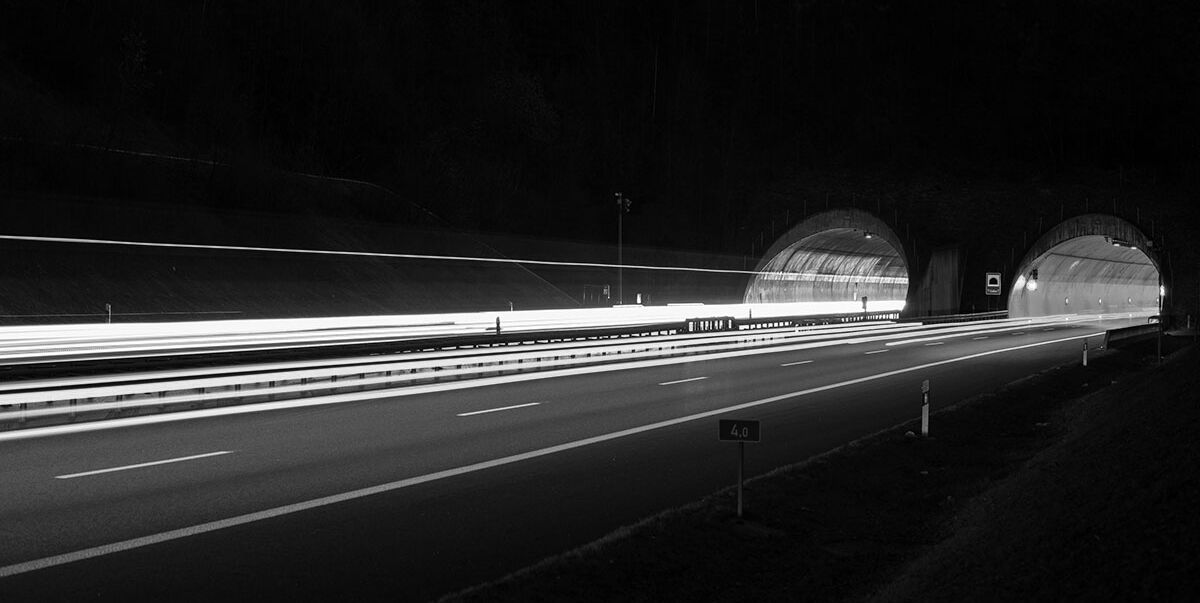Superordinate traffic computer (ÜVR) Thüringen
Coordinated traffic control in the tunnels in Thuringia

Within the scope of the new construction of the Rennsteig tunnel on the A 71 (2003), Heusch/Boesefeldt built the traffic sub-center for the "Kammquerung Thüringen" as a subcontractor of QSG Verkehrstechnik. Subsequently, we were commissioned with the construction of further tunnel sub-centers and the superordinate traffic computer (ÜVR) Thüringen.
The superordinate traffic computer (ÜVR) Thüringen controls traffic engineering on Thuringia's federal highways, incorporating information from the operational technology of the connected tunnels. Heusch/Boesefeldt has developed the ÜVR and set up the tunnel sub-centers as well.
Over the years, 12 tunnel sub-centers have been integrated into the superordinate traffic computer: Alte Burg, Rennsteig, Hochwald and Berg Bock (Kammquerung), Lobdeburg and Jagdberg (Tunnelkette Jena) as well as Eichelberg, Behringen, Schmücke, Höllberg, Pörzberg and Rothenstein.
Each of the tunnel control centers controls one active traffic management system per direction of travel. The ÜVR coordinates control for the tunnel chains Kammquerung and Jena.
The Erfurt - Halle/Leipzig network control system for the management of the traffic flow on the A4, A71, A38 and A9 highways was put into operation in 2019. The control system was also integrated into the superordinate traffic computer. The control measures for the network control is coordinated via the federal states of Thuringia and Saxony-Anhalt. The travel times for the control measures are recorded via Bluetooth sensors.
The superordinate traffic computer is a server system consisting of two redundant units, an online database server and an application server. The systems operate in "hot-standby" mode and have a common history database server.
The traffic computer controls the traffic technology by incorporating information from the tunnel operating technology. To do so, it is coupled with the tunnel computers of the individual tunnels and the superordinate control technology computer. The operating technology receives aggregated information from the traffic computer.
Traffic data acquisition is done by the connected sensors at 15-second intervals, which is four times faster than is generally the case. This places additional demands on the processing speed and data storage.
Measures for emergencies or catastrophes are the original task of the superordinate traffic computer. Catastrophic incidents are handled in a coordinated manner across the Kammquerung and Jena tunnel chain and supported with appropriate detour measures via the downstream network. The detours are indicated by the automatic activation of variable message signs. Special simplified operating procedures, adapted to these catastrophes, support fast and error-free processing.

